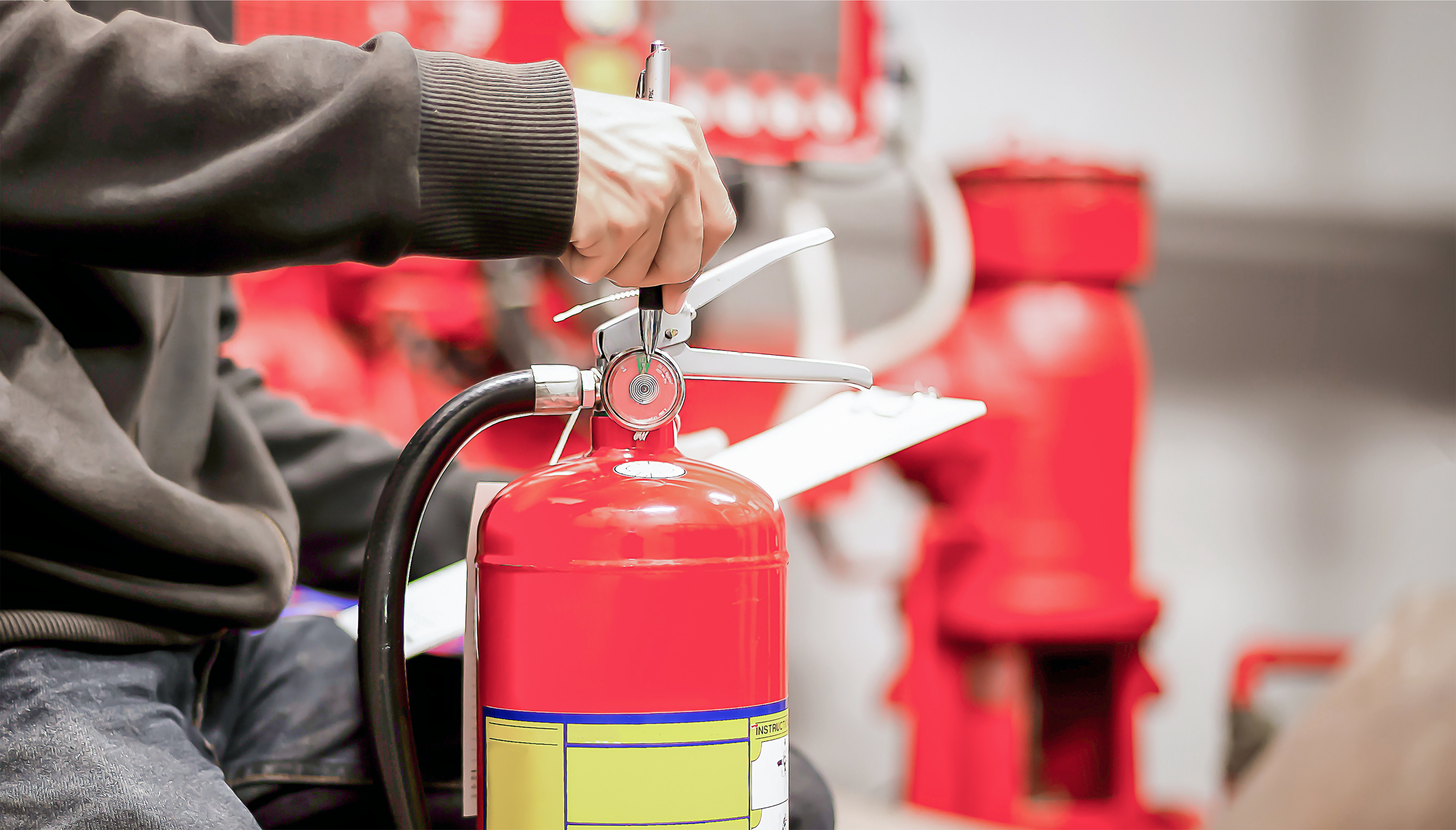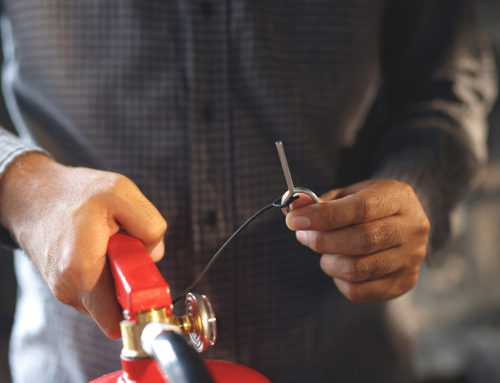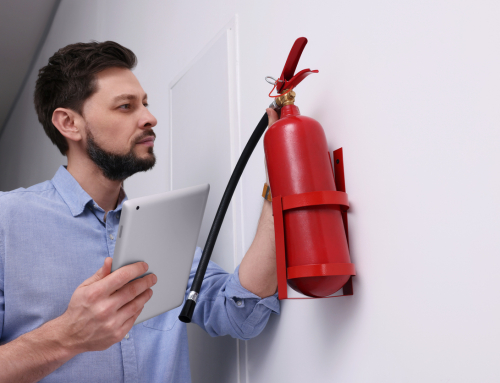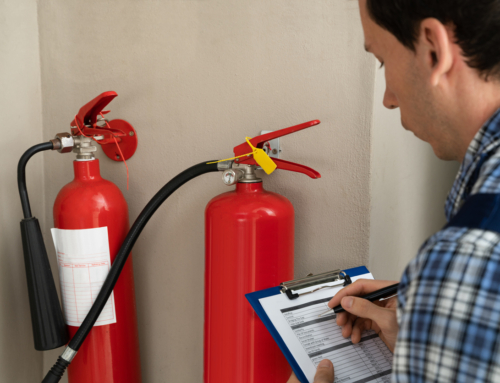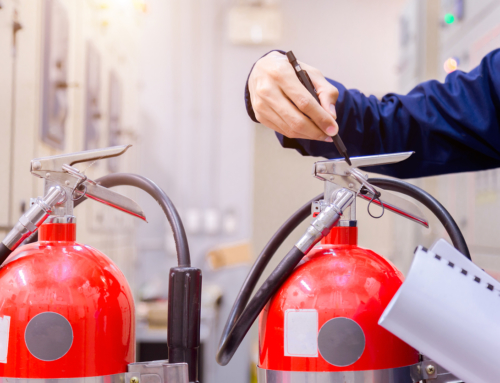A single malfunctioning fire extinguisher can put countless lives at risk, which is why regular testing and inspections are important to ensure fire safety.
However, fire extinguishers can fail testing and inspections for a variety of reasons. Learn about the common issues that might be affecting your fire extinguishers and how you can address them.
5 Most Common Reasons to Fail Fire Extinguisher Testing + What to Do
1. Fire extinguisher obstructed
Issue: When a fire extinguisher is obstructed, it could be “hidden” behind or under furniture, equipment, or fixtures. It’s essential to ensure that the areas around fire extinguishers are completely free of obstructions to grant easy access to the equipment during an emergency.
What to do: You should immediately remove obstructions or reposition the fire extinguisher. Place it along a natural path of movement, such as a hallway or an entrance/exit, along with clear signage for easy identification.
2. Cylinder has dents and/or rust
Issue: Fire extinguishers may deteriorate physically because of corrosive or moist surroundings, frequent transfers, mishandling, or accidents. These physical defects can cause breakdowns and even explosions.
What to Do: The only way to solve this is to forward the cylinder to the manufacturer for replacement immediately.
3. Fire extinguisher overcharged or undercharged
Issue: An extinguisher with a good charge will have sufficient velocity to spray the chemical 10-20 feet. However, an overcharged fire extinguisher can cause leakage or worse, a cylinder explosion. On the other hand, an undercharged extinguisher can be equally dangerous and be unable to extinguish a fire.
What to Do: The only way to deal with an under or overcharged fire extinguisher is to return it to the manufacturer or again speak to your local fire safety experts. They will either recharge it or replace it.
4. Locking pin missing/broken seal
Issue: A missing locking pin or broken seal can indicate that the extinguisher has already been used or tampered with. These parts also prevent the extinguisher from being accidentally discharged, but they can go missing after a training exercise, a maintenance procedure, or some other event.
What to Do: The best solution is to replace the individual parts that are missing. The testing technician might have some on hand, or they can show you where to get replacements. You can also contact the manufacturer.
5. Fire extinguisher not elevated from the floor
Issue: Placing a fire extinguisher directly on the floor can cause accidents, causing damage to the cylinder. Additionally, the temperature of the floor can also cause a change in pressure.
What to Do: Depending upon the size and type, most fire extinguishers are best positioned and mounted via a wall bracket. This is usually best placed around 3.5 feet above the ground. You can also put them on a wooden or metal box or plank to keep each fire extinguisher safely off the floor and within reach.
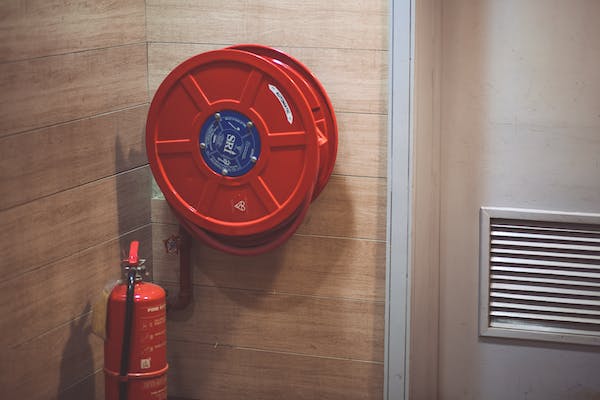
How Often Do Fire Extinguishers Need Inspection?
As a standard requirement by NZS 4503:2005, fire extinguishers should undergo professional inspection at least once every 12 months, but this can be more depending on the situation. Additionally, all inspection and maintenance must be carried out by a qualified individual.
Fire Extinguisher Testing Services from Jim’s Fire Safety
Do you need fire extinguisher inspection professionals to test and inspect your extinguishers? Our team offers a comprehensive suite of fire extinguisher inspection services to businesses all around New Zealand.
All of Jim’s Fire Safety technicians are trained in both fire and electrical safety. This means that when we come to take a look at your extinguishers, we can take care of the rest of your statutory testing requirements. We are ready to serve!
We have everything you need for fire safety in one team, giving you guaranteed peace of mind. This is why Jim’s Fire Safety is the most trusted name for fire extinguisher inspection services all throughout New Zealand.
Get a free quote on our testing and tagging services, or give us a call at 0800 454 654 to learn more.


